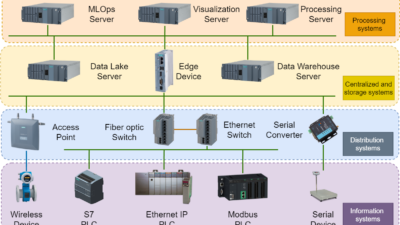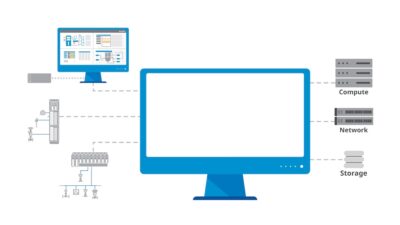Formed in 2004 from a collection of state-owned chemical companies, Beijing-based ChemChina recognized in early 2007 its need for a world-class ERP system to match its aspiration of becoming a world-class player in the global chemicals market. But with 92 production and operation enterprises spread across more than 400 sites—and a product range including caustic soda, fertilizer, gasoline...
Formed in 2004 from a collection of state-owned chemical companies, Beijing-based ChemChina recognized in early 2007 its need for a world-class ERP system to match its aspiration of becoming a world-class player in the global chemicals market. But with 92 production and operation enterprises spread across more than 400 sites—and a product range including caustic soda, fertilizer, gasoline additives, and foodstuffs—the choice required careful consideration.
To assist, ChemChina recruited the services of consulting firm Atos Origin in Paris. The proposed action: Enact a business model using proven industry best practices, and then identify an enterprise system that moved those practices into IT-based reality.
The task wasn’t without its challenges, explains Phil Mapley, an Atos Origin delivery director and manufacturing advisor who essentially spent January through September 2007 in China working on the project. In the end, it came down to a bake-off between SAP and Oracle , he explains—with SAP emerging as the winner, and the solution now being implemented.
“The functional fit was very similar,” Mapley recalls. “But in addition to a deeper bench of world-class references in process industries, SAP had pre-configured chemical industry ‘best-practice’ scenarios and an industry-proven implementation methodology—and Oracle didn’t.” Oracle had a lot of the functionality—but in terms of cost, risk, and time frame, Mapley adds, implementing SAP was the more profitable path for ChemChina to go down.
Consider first the best-practice scenarios. Developed with input from some of the world’s leading chemicals companies—e.g., BASF, Dow, and Dupont—they cover business functions and processes for planning, logistics, finance, and environmental health and safety, explains Mapley. Of those scenarios, 24 are enshrined in SAP Best Practice for Chemicals V1.500, he adds, and are already translated into Mandarin. Additionally, there are 32 available in SAP Best Practice for Chemicals V1.600, destined for translation into Mandarin by mid-2008.
In effect plug-and-play business templates, when coupled to an equally chemicals industry-specific recommended implementation methodology, “They take away a lot of the risk, making SAP in many ways the preferred choice,” says Mapley.
Rooted in process
“Customers want to geta feel for where SAP is going, both as a company and within the context of what’s happening with theIT industry as a whole.”
—Peter Maier, global senior VP of process industries, SAP
That SAP emerged as the clear winner comes as no surprise to Peter Maier, SAP’s global senior VP of process industries. The vendor’s roots lie in the process sector, he points out, with many of the company’s early customers comprising chemical or pharmaceutical companies. Globalization and industry consolidation have further boosted business, with customers wanting the same enterprisewide solution from a vendor with global reach.
Says Maier, “Over the last four years, we’ve been growing at twice the market rate, with around 7,000 process-industry customers and 19,000 installations.”
Even so, the depth of industry-specific capabilities—such as the pre-configured best practice scenarios—isn’t available across the entire range of process-based industries.
“At the moment, we have three such collections of best practices covering chemicals, mining, and fabricated metal products,” says Maier. “Others will come after we see the uptake. We need to make sure there’s a payback.
“Fabricated metal products may seem an odd choice alongside a major sector like chemicals,” Maier continues, “but many companies in the fabrication market are small and midsize businesses, and so are more in need of standard templates than, say, the paper industry, which is characterized by larger companies. Certainly, we’re not seeing paper companies crying out for pre-configured best practices, while the demand from fabrication companies is very real.”
SAP’s definition of process, explains Maier, embraces “heavy” process industries in the chemicals, pharmaceuticals, mill products, oil & gas, and mining sectors. Fabricated metal products, it turns out, fall within mill products as a subsector, and thus comprise a process industry.
Single-instance mind-set
For Dusseldorf-based chemicals giant Henkel , a manufacturer of adhesives, personal care, and laundry products, SAP is very much the enterprise platform of choice, says Eckehard Stech, the company’s head of IT for the U.K. and Ireland.
Henkel’s European and North American businesses operate on a single instance of SAP R/3 release 4.6c, Stech explains, which is run from four large servers in Dusseldorf. South America runs as a single instance of R/3 release 4.6c, also from Dusseldorf, as do the largely national instances of release 4.6c supporting the company’s Asian operations.
The data center for Central and Eastern Europe, however, is located in Austria, and runs SAP R/3 release 4.7 due to its support for Unicode—as required to render the Cryillic alphabet. Earlier versions such as 4.6c only support Cryillic through a “workaround.” Henkel prefers native Unicode support for Cryillic, and thus opted for release 4.7, says Stech. This year, 4.7 should become the standard version right across Henkel. “[Establishing a] standard template will make IT upgrades substantially easier,” notes Stech.
Aberdeen Group notes in recent studies that process industries now realize they must restructure their supply chains to take out costs and maintain their customer-service edge.
The global adoption of SAP is driven by a desire to standardize the operations of the company around consistently defined and implemented business processes, adds Mark Hamlin, operations director at Henkel’s plant in Winsford, U.K. The processes in question—i.e., order-to-cash, purchase-to-pay, managed production, product life-cycle management, and supply chain planning—act as standard templates across the Henkel business, he explains. “It’s a Henkel template, and the idea is that wherever you go in the Henkel world, the processes running are essentially the same.”
And it’s very much a Henkel template, stresses Stech. Despite SAP’s investment in pre-configured best-practice processes, Henkel elected to design, maintain, and develop its own processes.
“We use standard SAP R/3, configured for our needs,” says Stech. “We know about the standard processes, and have reviewed them, but prefer to customize our SAP instances around our own defined processes, which are precisely tailored to our needs.”
Henkel has leveraged those processes with SAP-developed technology and applications. For example, the company’s detergents division—its largest—implemented SAP Demand Planning, Advanced Planning and Optimization, and Business Information Warehouse data warehouse solution to not only develop an enhanced supply chain process, but bring about cross-country demand mapping and cost allocation.
In addition to the qualitative benefits—ranging from exception-based problem flagging to clearer communications achieved using consistent tools and processes—a number of important quantitative benefits also emerged. For example, in-full and on-time delivery service levels rose while production changeovers fell by 13 percent—all while maintaining constant inventory levels. Overall, supply chain costs fell by 4 percent.
Going the distance
But in this era of rising feedstock and fuel costs, process leaders like Henkel can’t afford to be sanguine about supply chain costs. Almost by definition, the need to concentrate production around large capital-intensive manufacturing facilities to achieve economies of scale in production means both raw inputs and finished goods often have to be shipped considerable distances.
Finished product from Henkel’s largest European adhesives plant, for example, is shipped to Germany, France, Spain, Canada, South Africa, and Japan.
Consequently, notes Boston-based analyst firm Aberdeen Group , “Companies in the process industries now realize they must restructure their supply chains to take out costs and maintain their customer-service edge.”
Eckehard Stech, IT head for chemicals giant Henkel in Ireland and the U.K., says despite SAP’s investment in pre-configuredbest-practice processes, Henkel elected to design, maintain,and develop its own processes.
SAP’s Maier says these kinds of supply chain transformations require the software giant to listen carefully to its customers, and stay close to their thought processes and wish lists—admittedly a posture not always associated with the industry’s leading vendor. On the contrary, he insists, with the process industry comprising such an important part of SAP’s business, a two-way dialogue with customers—both directly and through advisory groups—is a vital part of SAP’s process industry strategy.
Their interest is natural given the larger-than-average scale of the process-industry customers SAP sells to. Their CIOs, he observes, “have made a huge strategic contract with SAP. They want to know how their strategic supplier is going to support them, and what they are getting for their money and their commitment.” While invariably constructive, the discussion, claims Maier, “isn’t always a comfortable process—it’s not all wining and dining.”
Nor, he points out, do those discussions always lead to new SAP capabilities being developed in-house. “It’s very exciting right now,” says Maier. “We’re building up our process-industry solution set and offerings through our ecosphere of implementation partners and ISVs—and we need to remain focused on attracting ISVs that are developing those innovative applications that meet our customers’ needs.”
Data and process visibility, from plant floor to top floor
76%
Cross-functional metrics
71%
Data and process visibility across the end-to-end supply chain
69%
Closed-loop integration of supply chain planning & execution
68%
Centralized supply chain management organization
64%



